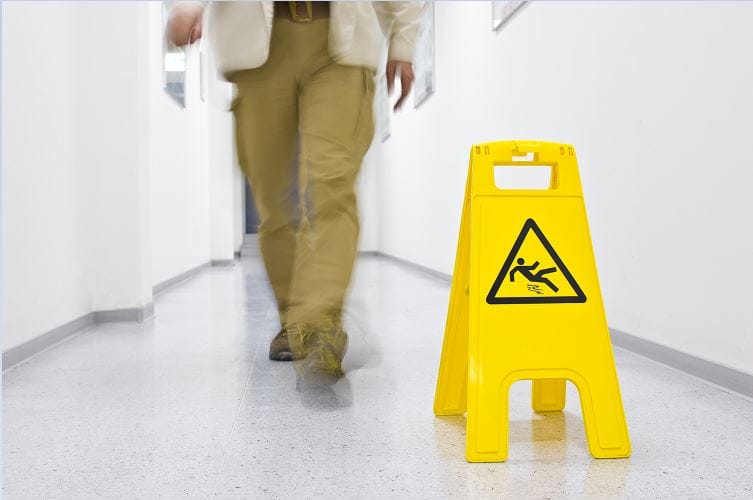
This is arguably the most complicated aspect of every slip and fall accident whether it occurs in San Diego, Palm Springs, or El Centro. If you want to recover compensation after a slip and fall under the legal theory of premises liability, you probably know that the success of your claim hinges on how you prove that the owner or occupier of the property on which you were injured knew or should have known about the dangerous condition that caused the accident.
And how do you establish something as complex when you do not know the property owner and it was your first time being on that property? Luckily, there is a way. Generally speaking, establishing liability in a slip and fall accident is not something people in California are very successful at when they are not represented by a skillful San Diego slip and fall accident attorney.
Actual vs constructive knowledge in a slip and fall accident
Regardless of the type of property on which you sustained slip and fall injuries, proving the property owner’s fault in causing the accident usually involves one or both of the following elements of a premises liability claim:
- The owner or occupier of the property (including the owner or occupier’s employees) created the dangerous condition.
- The owner or occupier of the property (including the owner or occupier’s employees) was on actual or constructive notice of the dangerous condition.
Our experienced slip and fall accident attorney in San Diego at Hiden, Rott & Oertle , LLP, explains that actual notice means that the owner or occupier of the property was aware of the dangerous condition prior to the accident, and did nothing to remedy, remove or fix the condition. Constructive notice, on the other hand, means that the property owner or occupier should have known about the dangerous condition through proper and regular inspection and maintenance.
Either way, since the owner or occupier of the property, owed you a duty to ensure a safe environment, failure to ensure the visitors’ safety made the owner or occupier liable for your injuries and damages. It is true for slip and fall accidents that occur in grocery stores, shopping malls, restaurants, cafes, bars, hotels, parks, theme parks, supermarkets, and other private and public properties or areas.
Proving that the property owner or occupier knew or should have known about the condition
But how do you actually prove any of the above-mentioned? How do you establish that the property owner or occupier was on actual or constructive notice of the hazardous condition?
Let’s imagine that you slip and fall on spilled olive oil in a grocery store, and although the store’s workers refuse to admit their fault, you can establish that they were on constructive knowledge because the oil’s sticky texture indicates that the oil had been there for an unreasonably long time prior to the accident.
Or let’s imagine that you slip and fell on spilled milk in a supermarket and you hear one of the workers complain to his coworkers that he thought this was cleaned up hours ago. That is actual notice. Also, witnesses can provide an invaluable input into your slip and fall claim, as they can attest to the fact that the dangerous condition existed long enough or that they themselves told the owner or occupier of the property (or employees at the property) about the condition (or heard someone else complain about it).
Get legal advice from a San Diego slip and fall accident attorney
There is no universal way of proving that the property owner knew or should have known about the dangerous condition that would apply to all cases. Rather, it depends on your particular circumstances, which is why it is advised to consult with a San Diego slip and fall accident attorney to not only find the evidence but also preserve it. After all, cases, when the property owner fixed or remedied the dangerous condition after the accident in an attempt to avoid liability, are not unheard of.
A thorough investigation is required to determine whether or not the owner or occupier of the property was on actual or constructive notice of the hazardous condition. This often requires lawyers to request the property owner to give access to surveillance footage to not only watch the actual accident but also check for how long the condition had existed prior to the accident.
You may be entitled to compensation. Seek legal advice today by speaking to our best slip and fall accident lawyers in California. Contact Hiden, Rott & Oertle , LLP, and get a free consultation today. Call at at our office or complete this contact form for more information.
